#Western Black-capped Lory
Text
Parrots (pt 1)
birbas <3
Ochre Marked Parrot
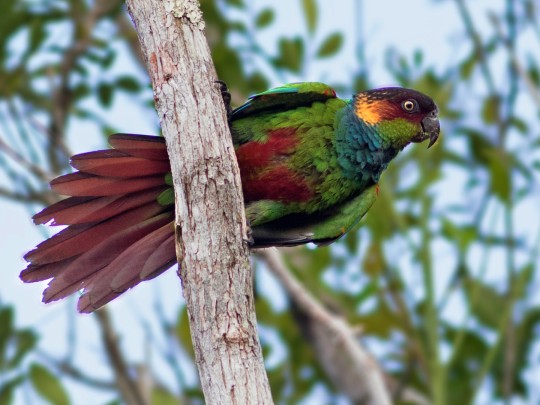
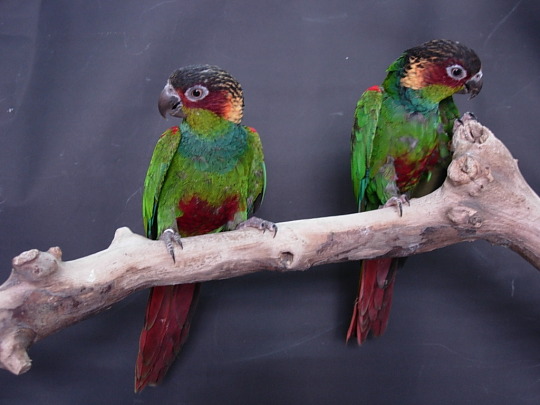
very colorful.
Green Cheek Parrot
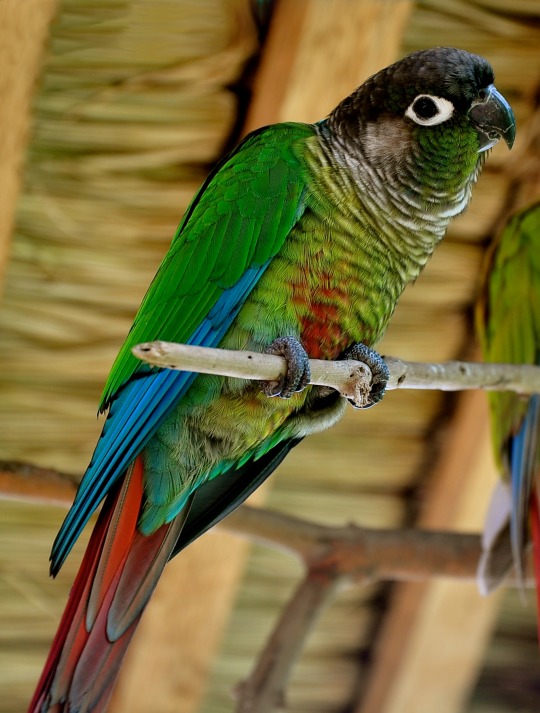
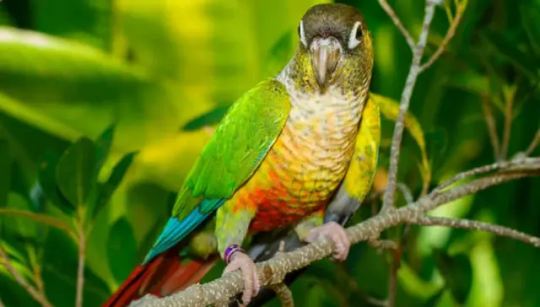
Hyacinth Macaw

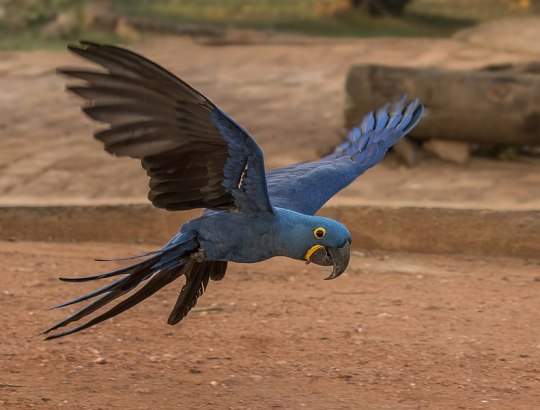
Big Blue Birba
Spix's Macaw
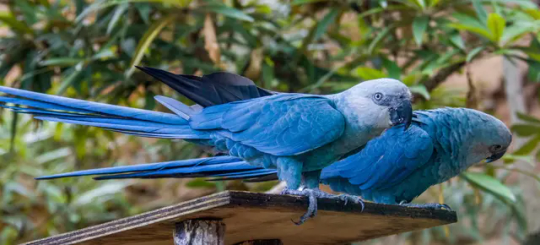

Scarlet Macaw



Hardly the most obscure birba, but excellent nonetheless.
Western Rosella


smoll
Crimson Rosella


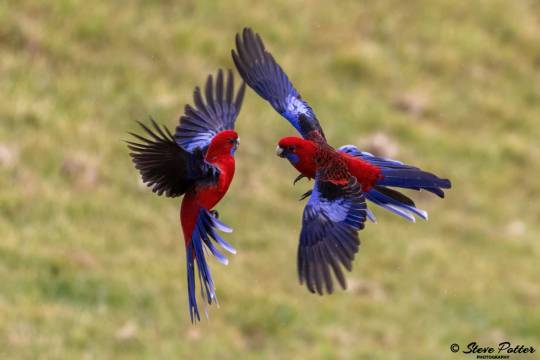
Black Lory

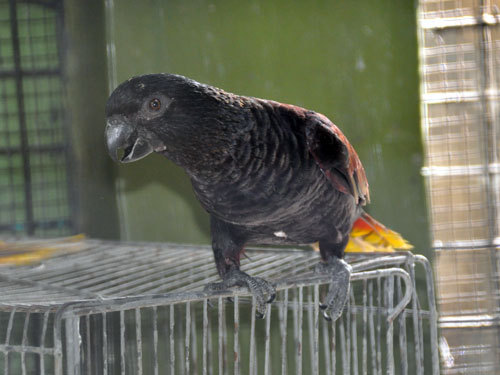
Black Capped Lory



Yellow Streaked Lory
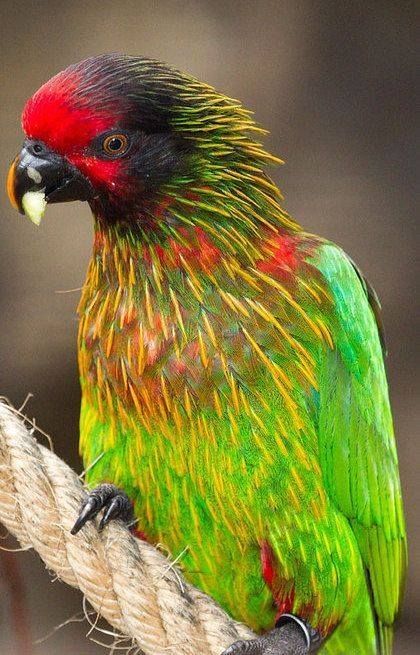

Coconut Lorikeet


Rainbow Lorikeet


Biak Lorikeet
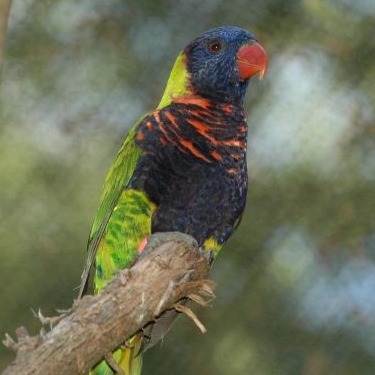

Pohnpei Lorikeet
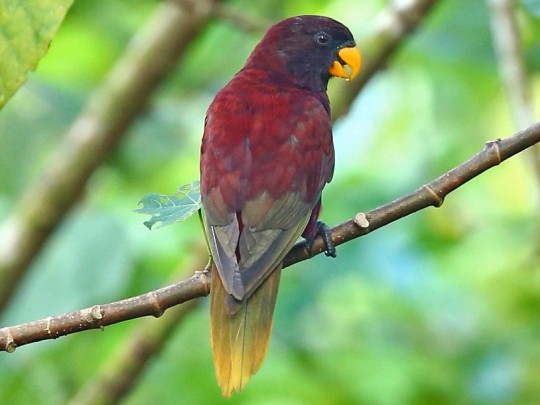
8 notes
·
View notes
Photo

December 27, 2020 - Black-capped Lory, Western Black-capped Lory, or Tricolored Lory (Lorius lory)
These lories are found in forests and swamps in parts of Indonesia and Papua New Guinea. They eat pollen, nectar, flowers, fruit, and some insects, usually foraging in pairs or small groups in the middle story and canopy of the forest. Breeding between May and October, females lay clutches of two eggs in tree cavities.
#black-capped lory#tricolored lory#lory#parrot#lorius lory#bird#birds#illustration#art#tropical#birblr art
98 notes
·
View notes
Text
Your Monkey Level is:
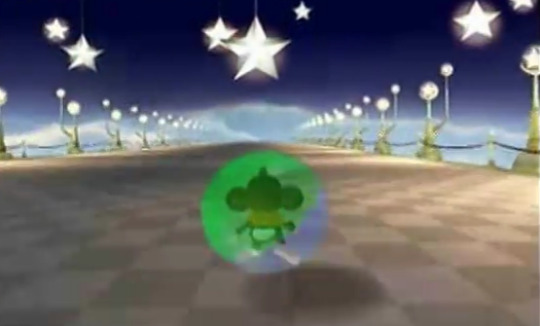
-4499 to -4000: Ring-Tailed Lemur
-3999 to -3500: Ruffed Lemur
-3499 to -3000: Indris
-2999 to -2500: Avahi
-2499 to -2000: Vereaux's Sifika
-1999 to -1500: Slender Loris
-1499 to -1000: Slow Loris
-999 to -500: Potto
-499 to 0: Bush Baby
1 to 25: Thick-Tailed Bushbaby
26 to 50: Aye-Aye
51 to 75: Western Tarsier
76 to 100: Pygmy Marmoset
101 to 125: Cotton-Top Tamarin
126 to 150: Emporer Tamarin
151 to 175: Golden Lion Tamarin
176 to 200: Goelidi's Marmoset
201 to 225: Bare-Face Uakari
226 to 250: Mat-Faced Saki
251 to 275: Black Howler Monkey
276 to 300: Red Howler Monkey
301 to 325: Spider Monkey
326 to 350: Humboldt's Woolly Monkey
351 to 375: Douroucouli
376 to 400: Tiki Monkey
401 to 425: Squirrel Monkey
426 to 450: Brown Tufted Capuchin
451 to 475: Abyssian Black & White Colobus
476 to 500: Dusky Langur
501 to 525: Hanuman Langur
526 to 550: Douc Langur
551 to 575: Silver-Leaf Monkey
576 to 600: Golden Snub Nosed Monkey
601 to 625: Proboscis Monkey
626 to 650: White-Collared Mangabey
651 to 675: Patas Monkey
676 to 700: Grey Cheeked Mangabey
701 to 725: Talapoin Monkey
726 to 750: Bonnet Monkey
751 to 775: Stump-Tailed Macaque
776 to 800: Pig-Tailed Macaque
801 to 825: Lion-Tailed Macaque
826 to 850: de Brazza's Monkey
851 to 875: Savanna Monkey
876 to 900: Long-Tailed Macaque
901 to 925: Japanese Macaque
926 to 950: Black Ape
951 to 975: Yellow Baboon
976 to 1000: Hamadryas
1001 to 1025: Mandrill
1026 to 1050: Gelada Gibbon
1051 to 1075: White Handed Gibbon
1076 to 1100: Capped Gibbon
1101 to 1125: Moloch Gibbon
1126 to 1150: Siamang Gibbon
1151 to 1175: Orangutan
1176 to 1200: Chimpanzee
1201 to 1225: Gorilla
8 notes
·
View notes
Text
Port Moresby Nature Park
Port Moresby Nature Park
Understandably one of the most popular places in Port Moresby, the Nature Park is the best (or at least the easiest and cheapest by some margin) way to see the incredible native animals of Papua New Guinea up close.
The first enclosure was a converted WW2 structure relocated from downtown Port Moresby. It was home to some of the most colourful birds in the park, such as the Eclectus Parrot,…
View On WordPress
#Agile Wallaby#Bird of Paradise#Blue-king Kookaburra#Cassowary#Dorias Tree Kangaroo#Eclectus Parrot#Grey Dorcopsis Wallaby#Huon Tree-Kangaroo and Goodfellows Tree-Kangaroo#Papua New Guinea#photography#PNG#Port Moresby Nature Park#Purple-bellied Lory#Raggian Bird of Paradise#Rainbow Lorikeet#Slender-billed Cuckoo-Dove#travel#Victoria Crowned Pigeon#Western Black-capped Lory#Yellow-faced Myna
0 notes
Text
The Amazon of the east, Dehing Patkai Wildlife Sanctuary — World Environment Day
This World Environment Day, I would like to write about one of the Wildlife Sanctuaries from Assam, India. The home to 47 mammal species, 47 reptile species and 310 butterfly species and known as the amazon of the east “Dehing Patkai Wildlife Sanctuary”. This day itself has been around since 1974, and according to the UN, it is their most important day for encouraging worldwide awareness and action for the protection of the environment.
Each year, World Environment Day takes on a theme that focuses on a pressing environmental concern. This years’ theme is ‘Time for Nature,’ with a focus on its role in providing the essential infrastructure that supports life on Earth and human development.
Dehing Patkai Wildlife Sanctuary
The Sanctuary with an area of 111.19 sq. Kms. is located in the Dibrugarh and Tinsukia districts of Assam and is famous for Assam Valley Tropical Wet Evergreen Forests bordering Arunachal Pradesh. The Sanctuary is a part of the Dehing-Patkai Elephant Reserve having the World War II cemeteries nearby, along with the Stillwell Road and the oldest refinery of Asia in Digboi and ‘open cast’ coal mining at Lido.

Dehing Patkai is the only rainforest in Assam. This sanctuary consists of three parts: Jeypore, upper Dihing River and Dirok rainforest. It was declared as a sanctuary on 13 June 2004. This sanctuary is also a part of the Dehing-Patkai Elephant Reserve. The area also has some historic attractions, including several World War II cemeteries, the Stillwell road and the Digboi refinery, the oldest in Asia.
The rainforest stretches for more than 575 km2 in the districts of Dibrugarh, Tinsukia and Sivasagar. A part of the forest was declared as a wildlife sanctuary by the Government of Assam, while another part falls under the Dibru-Deomali elephant's reserve. The forest further spreads over in the Tirap and Changlang districts of Arunachal Pradesh. The Dehing Patkai forms the largest stretch of tropical lowland rainforests in India. The forest is often referred to as “The Amazon of the East” owing to its large area and thick forests.
Being a completely virgin rainforest, this sanctuary is very rich in biodiversity. It is an ideal habitat for non-human primates. Till date, 47 mammal species, 47 reptile species and 310 butterfly species have been recorded. The most common mammal species of this sanctuary are Hoolock Gibbon, Slow Loris, Pig-Tailed Macaque, Stump-Tailed Macaque, Capped Langur, Asian Elephant, Bengal Tiger, Indian Leopard, Gaur, Chinese Pangolin, Himalayan Black Bear, Himalayan Squirrel, Leopard Cat, Clouded Leopard, Porcupine, Crab Eating Mongoose, Sambar, Sun Bear, Binturong, Barking Deer, Golden Cat and Marbled Cat.

Dehing Patkai rainforest harbours about 293 bird species, belonging to 174 genera and 51 families. The majority is resident (63.7%), some are winter visitors (23.1% ), and very few are summer visitors (2.5%). About 10.7% are altitudinal migrants, coming mainly from the higher reaches of the western, central and eastern Himalayas. The Avifauna includes slender-billed vulture, white-winged duck, greater adjutant, lesser adjutant greater spotted eagle, beautiful nuthatch, marsh babbler, tawny-breasted wren-babbler, yellow-vented warbler, broad-billed warbler, white-naped yuhina, white-cheeked partridge, great hornbill, brown hornbill, Oriental darter and painted stork, osprey, kalij pheasant, grey peacock pheasant, besra, black baza and hill myna.

The different trees of this four-layered rainforest are laden with many exotic species of orchids and bromeliads. There is an abundance of ferns, epiphytes, wild bananas, orchids, arums, climbers and linas in this humid forest habitat. Some of the important tree species found in this forest area are — Hollang, Mekai, Dhuna, Udiyam, Nahar, Samkothal, Bheer, Hollock, Nahor, Au — tenga (elephant apple), different species of Dimoru etc. The towering Hollong tree which is also the state tree of Assam dominates the emergent layer of this rainforest.
For More Info visit Assam Tourism Website
Photo Credits — S.H. Patgiri, Rofikul
1 note
·
View note
Photo

THE FRANKLIN is proud to present:
Alberto Aguilar
Jacklyn Jacunski
Kahlil Robert Irving
On view at the Front Yard, 24 / 7
October 1st - November 17th
Opening weekend: October 4th - 7th, 2019
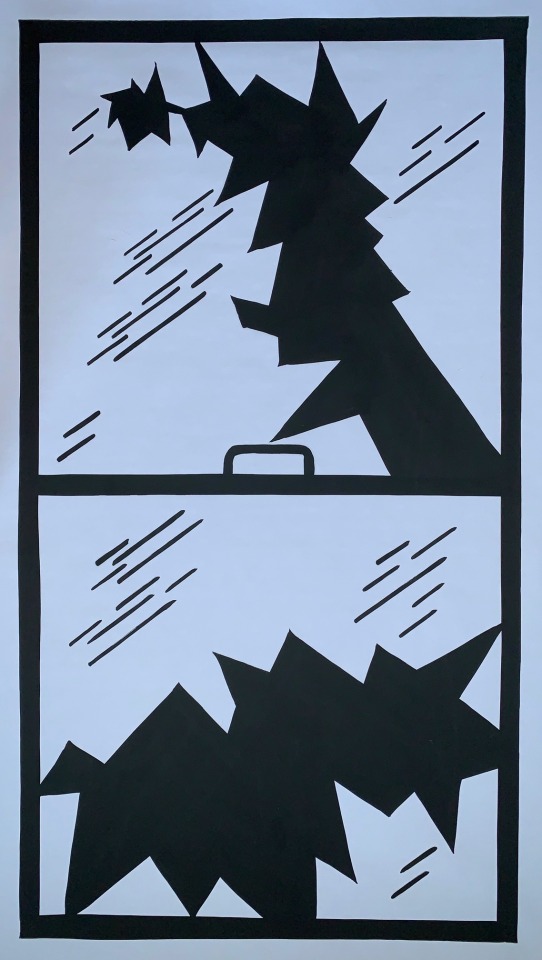
City Break Up
by alberto aguilar
Measure front windows of home in front of the Franklin.
Make drawing of broken window in shape of cities of Chicago and Havana.
Send to sign painter to make to scale of actual windows.
Affix broken window signs to actual windows.
Broken window signs will also be affixed at Terrain Biennial site in Havana, Cuba.
alberto aguilar is a chicago based artist who uses whatever materials are at hand as a way to connect with the viewer. he recently had a survey exhibition at gallery 400 in chicago titled ‘moves on human scale. he has exhibited at the museum of contemporary art detroit; palo alto art center; national museum of mexican art, chicago; museum of contemporary art chicago; minneapolis institute of art; crystal bridges museum of american art, bentonville, ar; and the art institute of chicago. his work is in the collections of the national museum of mexican art; crystal bridges museum of american art; soho house chicago; and the office of the mayor of chicago, lori lightfoot. aguilar is the recipient of the 3arts award. he purposely got rid of all caps on this bio in order to create a minor disruption.

We Are Not Really Strangers
by Jaclyn Jacunski
This work plays with a rainbow spectrum of colored plastics and melted mirrors layered onto a chain link fence to transform an examine the sheer density of chain fencing on the west side an area bifurcated by development, and disinvestment. It as an architectural material creates a psychic mass that is distinct from other parts of city acting as and overlay that can sometimes be very tense as citizens, contend and participate with every day.
The vibrate, reflective color and material aims to entertain the neighborhood residents who pass by in hopes to give a sort of release with the unexpected environmental change with the moment of visual play that abstracts and reflects the materiality of the street. At the same time, the work probes the social and economic systems that shape communities, and issues of class, race, and gender that lie beneath its pattern repeat mapping out local migrations and economies of our urban life. The work investigates the conditions of new urban landscapes, including the effects of gentrification, renewal, and violence in the city.
Jaclyn Jacunski (jaclynjacunski.com) is a Chicago-based artist. Her works take on various formats from printmaking, installation, and sculpture using themes of community and its boundaries. Known for using materials scavenged from building sites, often in gentrifying neighborhoods, Jacunski reveals how neighborhood landscapes become expressions of a lived experience resisting powerful cultural systems such as gentrification, environmental threats, and state violence. She is the Director of Civic Engagement for the School of the Art Institute of Chicago where she creates platforms for the arts and social practice in the North Lawndale. Jaclyn works closely with local residents on the Westside to develop art programming from and with the community. In her work, she promotes community engagement in the arts with the aim to build equity and social justice in Chicago. She is interdisciplinary artist who exhibits locally and nationally, she earned her M.F.A. from SAIC and a B.F.A. from the University of Wisconsin- Madison. She has taught at SAIC and Harrington College of Design. She has been an artist in resident at Chicago Artist’s Coalition’s Bolt, exhibited at the ICA in Portland and Baltimore and recently highlighted in the Chicago Tribune and Hyperallergic.

Are You Ready
by Kahlil Robert Irving
Previously exhibited at Wesleyan University Center for the Arts, “Are You Ready” is a flag sculpture that connotes the relationship of a surrender flag and a racing flag. There is always a struggle and reality to face. So to use the flag with its complex usage past and present is a symbol I find relevant. “Are You Ready” is a response to the call that Tracy Chapman narrates within her song “I’m Ready”. She is singing for passage, for love, for health, for life. So I am responding to her call. This flag flying is a message for Black life and the perseverance of Black people through the constant pressures faced while living today.
Kahlil Robert Irving (b. 1992, San Diego, Ca) is a multimedia artist, currently living and working part time between Saint Louis, Missouri and Brooklyn, New York. Irving completed his BFA in art history and ceramics at the Kansas City Art Institute. In May of 2017, Irving earned his Master of Fine Arts at Washington University in St. Louis. At Washington University in St. Louis Irving was a Chancellor’s Graduate Fellow. Irving was awarded the 2017 Alice C. Cole Fellowship from the studio art department at Wellesley College in Wellesley, Massachusetts. Recently, Irving completed the Turner Teaching Fellow at the New York State College of Ceramics at Alfred University. His work is in the collections of the Riga Porcelain Museum, in Riga, Latvia; Foundation for Contemporary Ceramic Art in Kecskemet, Hungary; The RISD Museum in Providence, Rhode Island; The Carnegie Museum of Art, Pittsburgh, Pennsylvania; The Nerman Museum of Contemporary Art at Johnson Community College in Overland Park, Kansas; The Whitney Museum of American Art, New York, New York. Most recently, his practice has involved making objects that are to challenge constructs around identity and culture in western civilization. He wants to challenge realities of Racism and objects that exist within the history of decorative arts and contemporary life.
THE FRANKLIN
3522 W. Franklin Blvd, Chicago IL 60624
(312)823-3632
Hours: Saturdays 2-5PM and by appointment
http://thefranklinoutdoor.tumblr.com/
Instagram #thefranklinoutdoor
0 notes
Text
Lawachara
Lawachara National Park is the best studied and most visited protected area in Bangladesh. The park is located close to the town of
Srimangal but within Kamalganj Upazila, Moulvibazar District in the northeast of the country. It comprises about half of the 2,740 ha West
Bhanugach Reserved Forest.
This Bangladeshi park is famous for its natural beauty with tropical and semi-tropical forest. It became more known to all while “Around the
World in 80 days.” movie shoots here.
Lawachara National Park covers approximately 1,250 ha of semi-evergreen tropical forest. The land was declared a national park by the
Bangladesh government on July 7, 1996 under the Wildlife Act of 1974.
Mammals resident in the Lawachara National Park include the fascinating Bengal slow loris(Nycticebus bengalensis), a small primate with
huge brown eyes, a characteristically round flat head, small ears and dense brown and beige fur. Unfortunately, these cute little creatures are
targeted by poachers who sell them illegally as exotic pets. They are also hunted for certain body parts which some cultures believe have
medicinal properties. This has resulted in the Bengal slow loris being listed as 'vulnerable' by the International Union for Conservation of
Nature (IUCN). Lawachara is also home to the western hoolock gibbon (Hoolock hoolock), one of the top 25 most endangered primates in the
world. Their numbers have dwindled drastically in the last decade as humans encroach on their habitat and they are hunted for food and body
parts used in traditional medicines.
As the largest of the cat species, the tiger (Panthera tigris) can weigh more than 300 kgs and reach a total body length of up to 3.3m. Tigers
are listed as endangered, also primarily due to loss of habitat and illegal poaching. The Bengal tiger is the national animal of Bangladesh.
Other mammals found in Lawachara include capped langurs, golden jackals, Asian black bears, tigers, leopards, leopard cats, fishing cats,
sambars, barking dear and wild pigs.
Rare indigenous plant species found in Lawachara National Park include Alstonia scholaris, commonly known as the blackboard tree or
milkwood pine; Bridelia retusa; Phyllanthus emblica also known as Indian gooseberry; and Cassia fistula also known as the golden shower
tree. Visitors to the Lawachara National Park will no doubt appreciate the beauty and biodiversity of this scenic region of Bangladesh.
Lawachara National Park is best known for the relative ease of seeing primates including four globally threatened species: Northern Pig-tailed
Macaque, Phayre’s Leaf Monkey, Capped Langur, and the most important population in Bangladesh of Western Hoolock Gibbon, the only ape
found in Bangladesh. The forest is a popular destination for nature lovers and scientists, a wide range of forest birds are present from
Oriental Pied Hornbill and Kalij Pheasant down to six species of flowerpecker – Bangladesh’s smallest birds. Surveys continually find species
new for the forest and several species are only known in Bangladesh from Lawachara. The micro-climate of tall forest trees, cool clean air,
and lush green seems a world away from the rest of Bangladesh.
Two villages of Khashia ethnic community are located inside
the forest. The largest, “Magurchara Punji”, is inhabited by 40 households and the other, “Lawachara Punji”, has 23 households. Surrounding
the NP are tea estates, and several villages including a Tipra community of 75 households. Ecotourism is rapidly developing in the area
through local guest houses and guides.
0 notes
Text
When a collection is inspired by my own roots in India and my travels to China, I instantly feel a solid connect to it, even before the show commences.
Which is why when I found out that Loris Diran‘s new line, titled Back to Black, explored his personal journey of living and working in India and Mainland China, I was simultaneously tranquil and thrilled. Having attended his New York Fashion Week Mens (NYFWM) shows since the onset, from a blue and loose cut spring to a plaid drenched fall to my favorite pastel hued spring again, this was a sequential feather in a distinguished cap.
The inspiration was evident, with longer shirts, rounded shirt bottoms like kurtas and kaftans, the Oriental collars, the Nehru style jackets and the loosely cut palazzo pants. His explanation for choosing international inspirations was also based on the current economic climate, much like other designers who used fashion platforms to express their opinions. While China has Confucius and India and Gandhi, he felt we need to look at wisdom.
There were many rustic tweeds and woolen Meltons, with cashmeres and linen mixes adding grace to the longer lined shirts and outerwear. The colors were mostly the darker hues of black and gray, contrasting at times with white, silver, pewter, charcoal and a glittery metallic hue. I previously noticed how he paired jodhpuris with blazers and quite admired the trend, which made a comeback this time around.
Of suits, I quite liked the pewter wool jacquard suit, one with midnight wool twill and inverted pocket details, and particularly the black one with double pockets with a longer line kurta style shirt with a safety pin shaped collar pin. The latter was a look that defined Eastern and Western fusion impeccably well, and was presented in various fabrics for the suit with a charming array of duffle bags and purses for men.
The more causal clothing consisted of standouts like a plaid matching shirt and palazzo pant pairing, ombre pullovers with slim pants, long line shirts with details on the collar or one midnight blue silk and cashmere blend kurta with palazzo pants that looked like it had waltzed right out of the Delhi Fashion Week runways. Some street style compositions mixed tees with metallic undershirts, pairing them with leggings or slimmer fit pants. The looks worked, and provided contrast and variety while staying true to the simple and sartorial nature of the brand.
My favorites were the letter embroidered slogans, often on smocks with track pants, or inscribed on a hoodie with a swirl shearling bomber. Like another collection, they spoke of a poignant philosophy to follow: “Life is My Message” or “Everything Has Beauty, Not Everyone Sees It.”
All the looks were paired with Vint & York eyewear, an enviable collection of B.May luggage and ombre styled Dr. Martens shoes. These added a travel element to the men as they waltzed the runway, as if gallantly walking towards their next sophisticated destination. After an inspiring conversation with a man himself, I was convinced that travels and international understanding truly created the most poetic and luscious of collections.
And the best runways are those where poetry is in motion, isn’t it?
Of Blazers and Palazzos: Loris Diran's Asian Styled Story at #NYFWM. #NYFWM #menswear When a collection is inspired by my own roots in India and my travels to China…
#accessories#bags#blazers#china#clothing#culture#fashion models#fashion show#fashion week#india#international#jackets#jodhpuri#kurta#loris diran#male models#mens fashion#menswear#new york fashion week mens#nyfwm#outerwear#palazzo#politics#style#travel#trends
0 notes